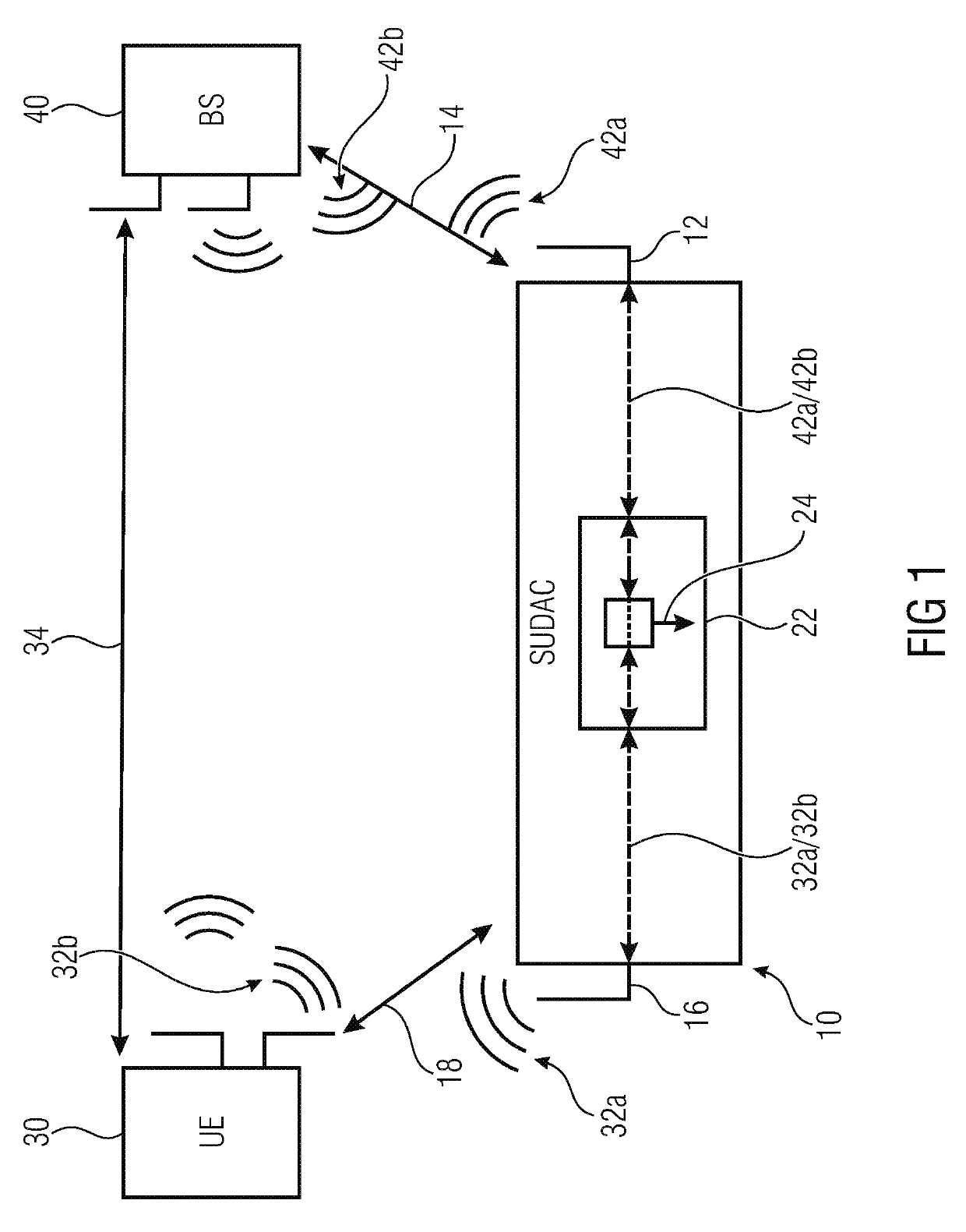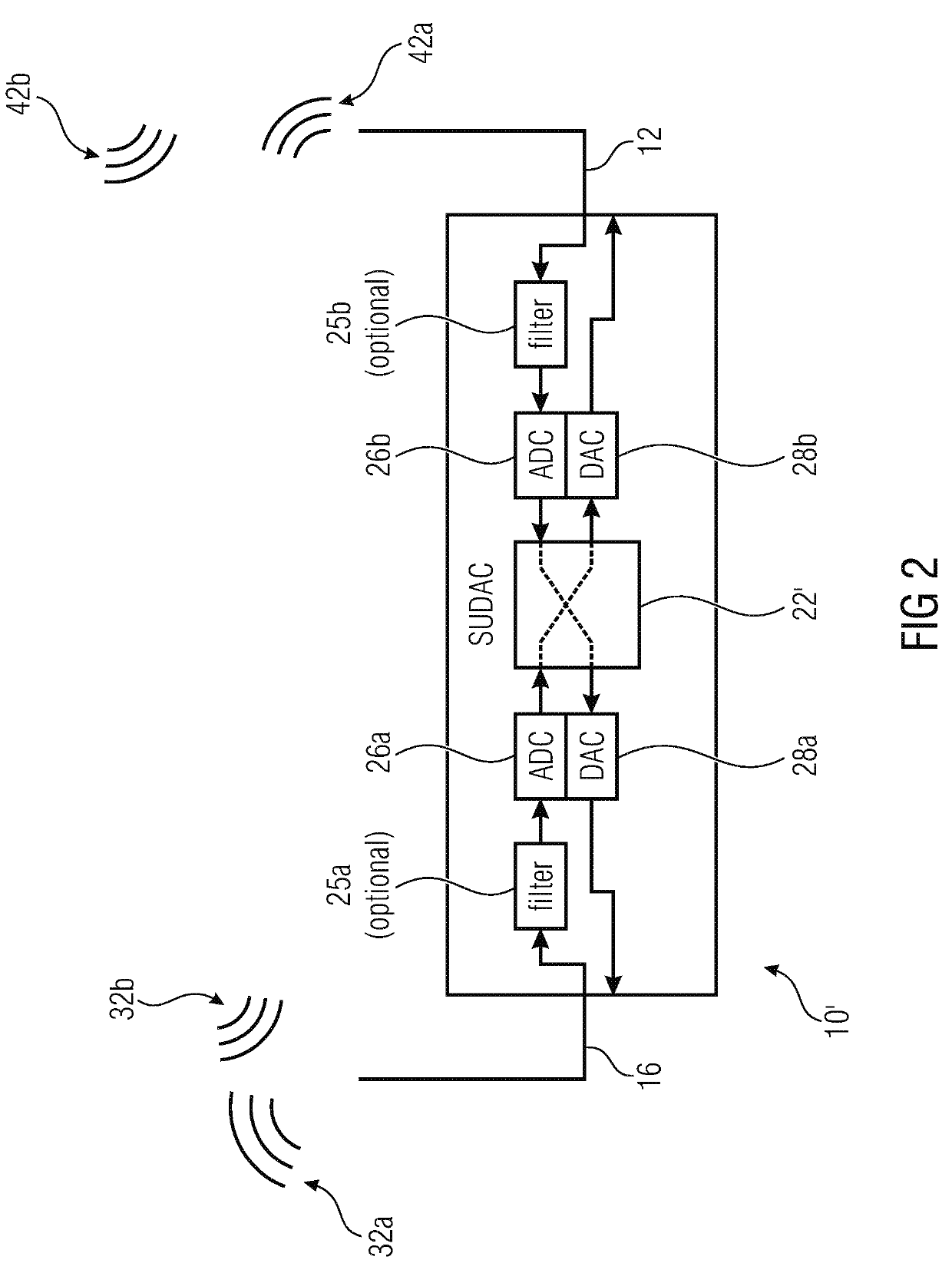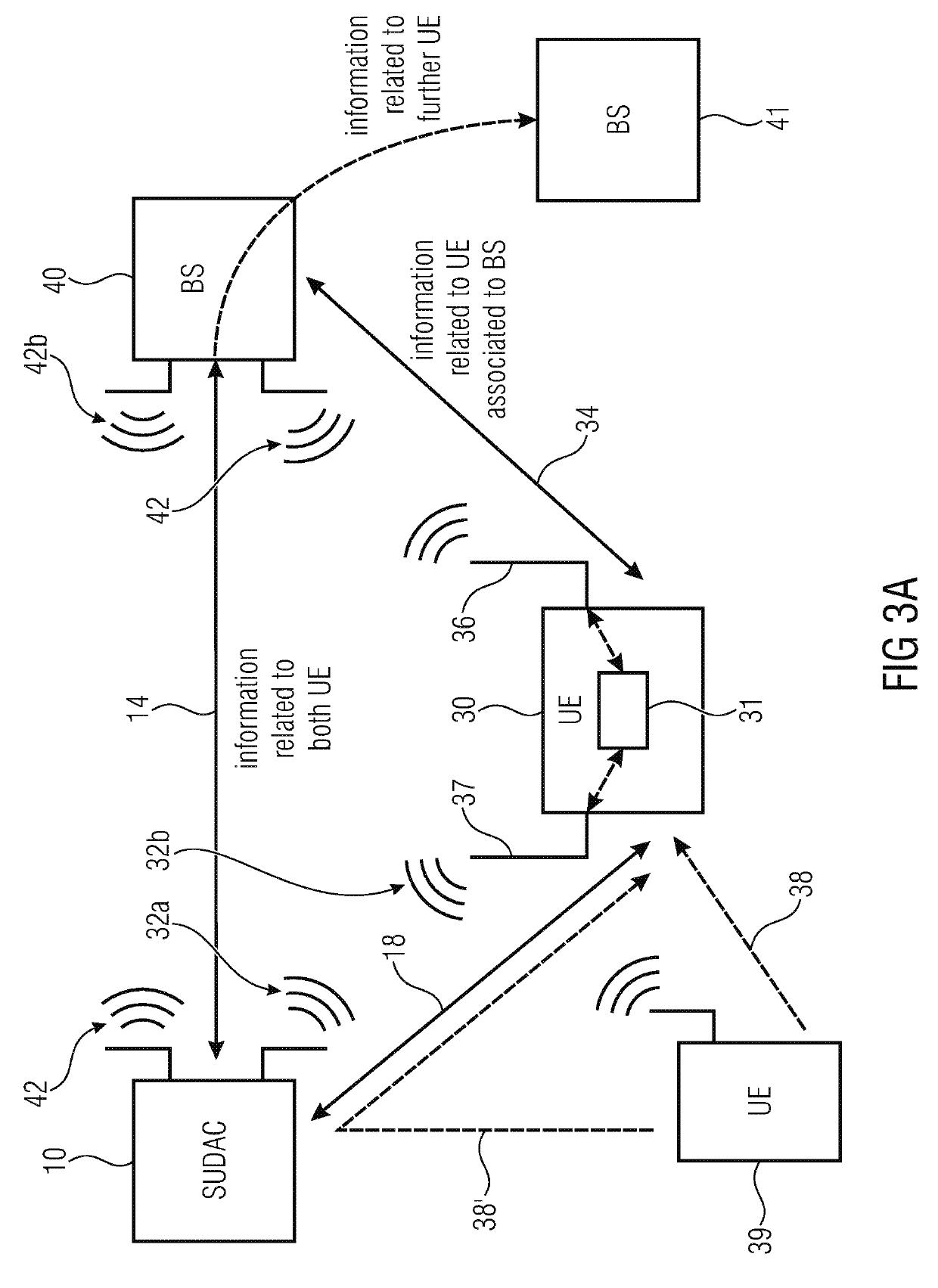SUDAC, user equipment, base station and SUDAC system
a technology of user equipment and sudac, which is applied in the field of sudac, user equipment, base station and sudac system, can solve the problems of inability to support the necessitated high data rate, the shortage of data rate that can be provided to the current 4g mobile communication system (like lte-advanced), and the inability to support the last mile from the backbone network to the home, so as to achieve the effect of increasing network efficiency
- Summary
- Abstract
- Description
- Claims
- Application Information
AI Technical Summary
Benefits of technology
Problems solved by technology
Method used
Image
Examples
Embodiment Construction
[0071]Below, embodiments of the present invention will be discussed in detail, wherein identical reference numbers are provided to objects having identical or similar functions, so that the description thereof is interchangeable or mutually applicable.
[0072]In the following, reference will be made to ultra-high frequencies and extremely-high frequencies. Ultra-high frequencies relate to frequencies in a range from at least 300 MH to 6 GHz. Extremely-high frequency relates to frequencies in a range from at least 30 GHz up to 300 GHz and advantageously to the so called 60 GHz band utilizing frequencies in the range between 57 and 64 GHz. Ultra-high frequencies are used, for example, in mobile communication networks such as for GSM and / or LTE (Long Term Evolution) and is suitable for transferring data to or from a mobile device and from other mobile devices or a base station. Other frequency bands such as the extremely-high frequency band provide higher bandwidth but waves transmitted ...
PUM
 Login to View More
Login to View More Abstract
Description
Claims
Application Information
 Login to View More
Login to View More - R&D
- Intellectual Property
- Life Sciences
- Materials
- Tech Scout
- Unparalleled Data Quality
- Higher Quality Content
- 60% Fewer Hallucinations
Browse by: Latest US Patents, China's latest patents, Technical Efficacy Thesaurus, Application Domain, Technology Topic, Popular Technical Reports.
© 2025 PatSnap. All rights reserved.Legal|Privacy policy|Modern Slavery Act Transparency Statement|Sitemap|About US| Contact US: help@patsnap.com



